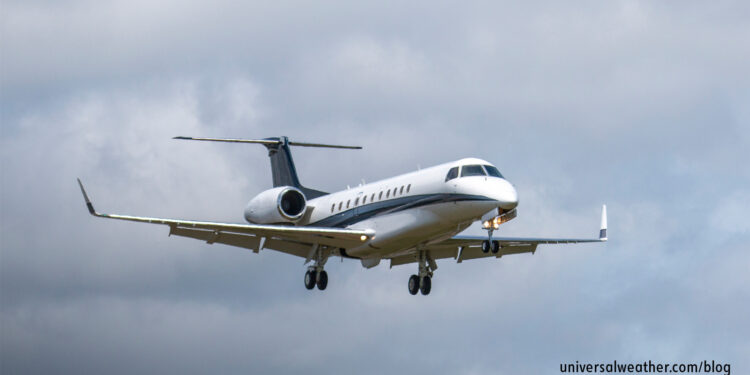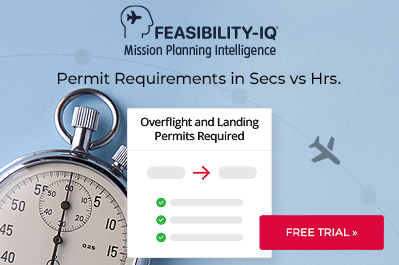Business Aircraft Ops to India: Additional Flight Planning Considerations & Weather

This business aviation blog post is part of a series on operating in Aruba and continues from our last article: “Business Aircraft Ops to India: Flight Planning.“
When planning a business aircraft mission to India, it’s important to be aware of all relevant flight planning requirements for the country and the particular airports. Your 3rd-party provider can supply the latest information and assorted tips on local requirements, restrictions, and credit considerations. Also, be aware of weather concerns when traveling to India that may affect your operations.
The following is an overview of what you need to know:
1. RVSM and equipment requirements
To operate in Indian airspace you must have traffic collision avoidance system (TCAS) II and be compliant with reduced vertical separation minimum (RVSM). RVSM rules now cover all Indian airspace between flight level (FL) 290-410. Non-RVSM aircraft are not permitted to operate within this airspace. RVSM compliant aircraft may operate within Indian FIR RVSM airspace after submitting an ICAO flight plan indicating RVSM status in Item 10. Under special circumstances non-RVSM compliant State aircraft may be able to request and obtain approval to operate within RVSM designated airspace. For more information on this, it’s recommended that you communicate with the 3rd-party provider.
2. Peak travel considerations
Some larger airports in India experience peak periods of scheduled commercial activity and this has potential to cause operational delays. The most difficult airport in this regard is Mumbai (VABB) as peak periods can be pronounced and traffic congestion high. Be aware that VABB currently has general aviation (GA) blackout periods from 0800-1000 and 1730-1930 local. Additionally, between 2115 and 2315 local only GA departures, and not arrivals, are permitted at VABB.
3. Additional considerations
When operating over the Indian landmass it’s necessary to fly specific approved airways as random routing is not possible. Be aware that W “Whiskey” airways are usually reserved for domestic operators within India. Exceptions to this may be possible if there are flight restrictions in the region or other practical airways are not available. Approval to use W airways should be confirmed by your 3rd-party provider, ground handler, or air traffic control (ATC). It’s also important to check on tow bar and ground support equipment (GSE) requirements when operating within India. While the airport authority of India has issued a circular that all inbound/outbound aircraft carry a towbar, there’s no ‘towbar notation’ required on your flight plan.
4. Navigation and other fee considerations
Be aware that all navigation fees must be paid prior to departure from India. Additionally, all landing, parking, terminal and airport authority fees must be settled before departure. ATC will check with the airport finance department to ensure all outstanding fees/charges have been paid before they’ll approve a flight plan. Charges are normally settled by your ground handler and billed to the operator later. If the crew wishes to pay these fees directly they may go, with the ground handler, to the airport finance office where cash and consumer credit cards are accepted.
5. General weather considerations
Seasonal and local weather conditions vary depending on the region of the country. For example, in northern India there’s higher terrain, and fog is an issue at certain times of year. Monsoon season runs June 15 through to the end of August, and the entire country experienced heavy rainfall. Street flooding is common, in areas such as Mumbai, and airport operations may be impacted by heavy rain and standing water. For more information on the Indian monsoon season see the DGCA website. Additional atmospheric considerations include high cross winds as well as pollution-induced smoke conditions which, from time to time, restrict visibility.
6. Met offices
All airports in India, with the exception of very small airfields, have on-airport meteorological (Met) offices. Upon request these offices will provide weather updates for your route, including both domestic and international locations. They’re usually open during normal airport office business hours, and weather services are free of charge. A NOTAM office is also available at larger airports. This office is separate from the Met office. It’s open during normal airport hours, and services are also free of charge. If you’d like a briefing you’ll need to be escorted to the MET or NOTAM office by your handler as these offices are normally located within the same building as ATC.
7. Additional reading: Business Aircraft Ops to India – Series Index
Note: Links will be updated as articles are published.
- Part 1 – Airport options
- Part 2 – Airport operations
- Part 3 – Ground handling
- Part 4 – Additional services and operating costs
- Part 5 – Fuel and security
- Part 6 – CIQ
- Part 7 – Permit considerations
- Part 8 – Slots and military operations
- Part 9 – Flight planning
- Part 10 – Weather and additional flight planning information
- Part 11 – Hotel and local area
Conclusion
Be aware of the specific flight planning considerations for operators, including confirmation that airport fees are paid for in order for flight plans to be accepted by ATC. Weather issues can cause issues for your flight, so it’s recommended that operators stay updated on such concerns. Even if your destination airport remains operational, aircraft services may be delayed, and ground transport into the city may be much more challenging.
Later, we’ll discuss hotels and local area information for India and their impact on your trip.
Questions?
If you have any questions about this article or would like assistance planning your next trip to India, contact Christine Vamvakas at christinevamvakas@univ-wea.com.




